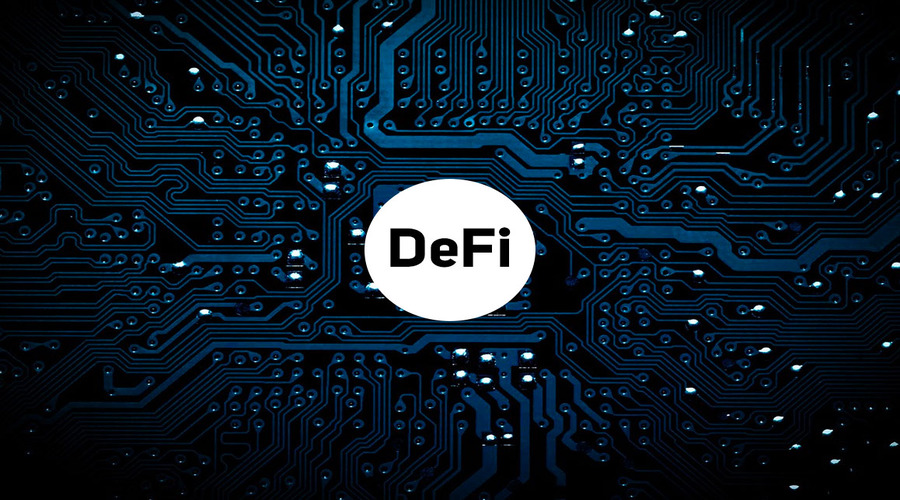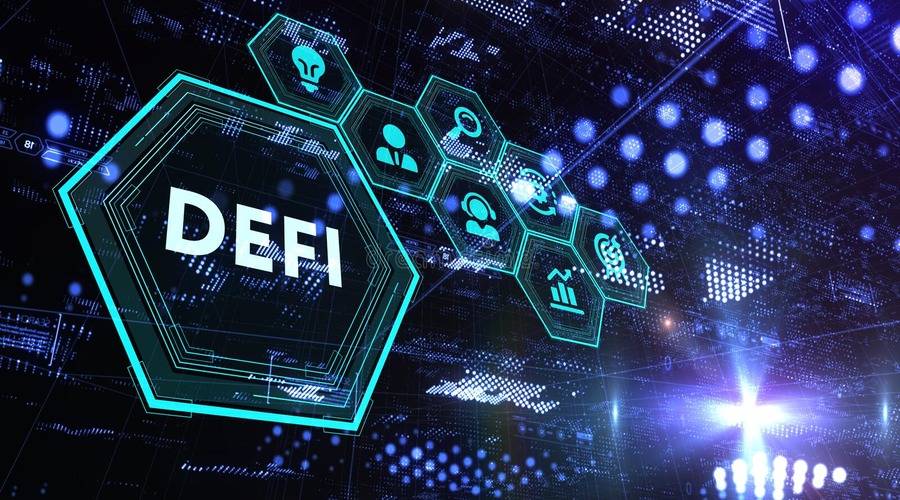Decentralized Finance (DeFi) has emerged as one of the most promising and rapidly growing sectors in the cryptocurrency ecosystem. Within DeFi, lending protocols play a vital role in providing individuals with new opportunities to earn interest on their digital assets and access liquidity without relying on traditional financial institutions. In this article, we will delve into the fundamentals of DeFi lending, exploring its key concepts, advantages, risks, and the platforms driving this innovative financial landscape.
What is DeFi lending?
DeFi lending refers to the process of lending and borrowing digital assets on decentralized platforms using blockchain technology. Unlike traditional lending, which relies on centralized intermediaries such as banks, DeFi lending leverages smart contracts to automate and execute lending agreements. These smart contracts are self-executing and operate on a public blockchain, ensuring transparency and eliminating the need for intermediaries.
DeFi lending has gained popularity due to its potential for higher interest rates, greater accessibility, and the removal of geographical restrictions. By enabling peer-to-peer lending and borrowing, DeFi lending opens up new avenues for financial inclusion and empowers individuals to take control of their assets.
Understanding Traditional Lending vs. DeFi Lending
Traditional Lending Overview
Traditional lending involves borrowing and lending money through financial institutions such as banks. These institutions act as intermediaries, assessing creditworthiness, setting interest rates, and managing the lending process. Traditional lending relies on centralized systems, which can lead to inefficiencies, limitations, and exclusion of certain individuals or communities.
Advantages of DeFi Lending
DeFi lending offers several advantages over traditional lending. Firstly, it operates on a decentralized network, eliminating the need for intermediaries and reducing associated costs. Secondly, DeFi lending platforms often provide higher interest rates compared to traditional banks, enabling lenders to earn greater returns on their investments. Additionally, DeFi lending is accessible to anyone with an internet connection and compatible digital assets, promoting financial inclusivity.
Key Concepts in DeFi Lending
To navigate the world of DeFi lending effectively, it is essential to understand key concepts and terminologies. Let’s explore some of these concepts:
Smart Contracts and Blockchain Technology
At the core of DeFi lending are smart contracts, which are self-executing agreements written in code. These contracts automatically facilitate, verify, and enforce the terms of a lending agreement without the need for intermediaries. Smart contracts operate on a blockchain, ensuring immutability, transparency, and security.
Decentralized Platforms and Protocols
DeFi lending platforms and protocols provide the infrastructure for lending and borrowing operations. These platforms are built on blockchain networks and allow users to interact with smart contracts. By leveraging decentralized platforms, users can access lending services while maintaining control over their assets.
Collateralization and Overcollateralization
DeFi lending platforms typically require borrowers to collateralize their loans by locking up digital assets as collateral. This collateral provides security for lenders and reduces the risk of default. Overcollateralization refers to the practice of requiring borrowers to provide collateral valued at a higher amount than the loan itself, providing an additional layer of protection for lenders.
Liquidity Pools and Automated Market Makers
DeFi lending platforms often use liquidity pools, which are pools of funds supplied by users, to facilitate lending and borrowing. Automated market makers (AMMs) are algorithms that enable the creation of liquidity pools and determine the exchange rates between different assets. These AMMs play a crucial role in ensuring liquidity and enabling efficient lending operations.
How Does DeFi Lending Work?
DeFi lending involves a series of steps for both borrowers and lenders. Let’s explore the borrowing and lending process in DeFi:
- Borrowers select a suitable DeFi lending platform and deposit collateral into a smart contract.
- The smart contract verifies the collateral and calculates the maximum loan amount available based on predefined parameters.
- Borrowers request a loan by specifying the desired loan amount and terms.
- Lenders review available loan requests and choose to fund them based on their risk appetite and return expectations.
- Once a loan is funded, borrowers receive the loaned amount in their wallet, and the collateral remains locked in the smart contract as security.
- Borrowers make periodic interest payments based on the agreed terms.
- At the end of the loan term, borrowers repay the principal along with any accrued interest to unlock their collateral.
Exploring Popular DeFi Lending Platforms
Several DeFi lending platforms have gained significant traction in the market. Let’s explore a few of the most prominent ones:
MakerDAO
MakerDAO is one of the pioneering DeFi lending platforms, best known for its stablecoin DAI. Users can deposit collateral, such as Ether (ETH), and generate DAI stablecoins, which can be used for various purposes within the DeFi ecosystem.
Aave
Aave is a decentralized non-custodial lending protocol that allows users to lend and borrow a wide range of digital assets. Aave’s platform offers unique features like flash loans, which allow users to borrow assets without collateral, as long as the loan is repaid within the same transaction.
Compound
Compound is another leading DeFi lending protocol that allows users to lend and borrow various cryptocurrencies. Compound’s interest rates are algorithmically determined based on supply and demand, ensuring efficiency and competitive rates.

Strategies for Maximizing DeFi Lending
To maximize the benefits of DeFi lending, users can employ various strategies:
Diversification of Collateral
By diversifying the collateral used for borrowing, users can minimize the risk associated with a single asset. Spreading collateral across different digital assets reduces the impact of potential price fluctuations on the loan.
Yield farming and Staking
Yield farming involves lending digital assets to liquidity pools and earning additional tokens as rewards. Staking, on the other hand, involves locking up assets to support the operations of a blockchain network and earning staking rewards. Both strategies can enhance overall returns in DeFi lending.
Flash loans and Arbitrage Opportunities
Flash loans are a unique feature of some DeFi lending platforms that allow users to borrow assets without collateral. Traders often utilize flash loans to exploit temporary price discrepancies across different exchanges, engaging in profitable arbitrage opportunities.
Security and Risks in DeFi Lending
While DeFi lending offers exciting opportunities, it also comes with certain risks:
Smart Contract Vulnerabilities
Smart contracts are not immune to bugs or vulnerabilities, and any weaknesses can potentially be exploited by malicious actors. Users should exercise caution and conduct thorough due diligence when interacting with DeFi lending platforms.
Impermanent Loss and Market Volatility
Lenders who provide liquidity to pools may experience impermanent loss if the value of the deposited assets significantly diverges during the lending period. Additionally, the volatility of digital assets can expose lenders and borrowers to potential losses.
Regulatory Challenges
The regulatory landscape surrounding DeFi lending is still evolving. Users should stay updated on legal and regulatory developments in their respective jurisdictions to ensure compliance and mitigate potential risks.
The Future of DeFi Lending
DeFi lending has shown tremendous growth and potential, but its journey is far from over. The future of DeFi lending holds several possibilities, including:
Integration with Traditional Finance
As DeFi lending gains mainstream adoption, we can expect to see increased integration with traditional finance. Collaboration between DeFi platforms and traditional financial institutions could bridge the gap between the two ecosystems, providing users with even more options and liquidity.
Scaling Solutions and Interoperability
Scalability remains a challenge for DeFi lending platforms, given the limitations of current blockchain networks. However, advancements in layer 2 solutions and interoperability protocols are being explored to address these scalability issues, enabling smoother user experiences and reduced transaction costs.
Mainstream Adoption and Challenges Ahead
While DeFi lending has made significant strides, widespread adoption still faces challenges such as user experience, education, and regulatory clarity. Overcoming these challenges will be crucial for DeFi lending to reach its full potential and become a viable alternative to traditional lending.
Conclusion
DeFi lending has revolutionized the financial landscape by introducing new opportunities for individuals to earn interest on their digital assets and access liquidity in a decentralized manner. Through smart contracts, blockchain technology, and innovative platforms, DeFi lending has gained popularity for its potential for higher returns, inclusivity, and transparency.
As with any investment or financial activity, users should carefully consider the risks associated with DeFi lending and conduct thorough research before participating. The evolving nature of DeFi lending presents exciting possibilities for the future, where decentralized finance and traditional finance can coexist, providing individuals with a diverse range of financial options.
Frequently Asked Questions (FAQs)
- Is DeFi lending safe? DeFi lending carries certain risks, such as smart contract vulnerabilities and market volatility. Users should exercise caution, conduct due diligence, and only invest what they can afford to lose.
- What are the advantages of DeFi lending over traditional lending? DeFi lending offers higher interest rates, greater accessibility, reduced reliance on intermediaries, and the potential for financial inclusion.
- Can I participate in DeFi lending without technical knowledge? Yes, many DeFi lending platforms provide user-friendly interfaces that simplify the borrowing and lending process, allowing individuals with minimal technical knowledge to participate.
- Are my funds insured in DeFi lending? Unlike traditional banks, DeFi lending platforms do not typically offer insurance on deposited funds. Users should carefully assess the risks and explore options like decentralized insurance protocols if additional protection is desired.
- How do I choose the right DeFi lending platform? When choosing a DeFi lending platform, consider factors such as security audits, reputation, user experience, available assets, interest rates, and community support.





